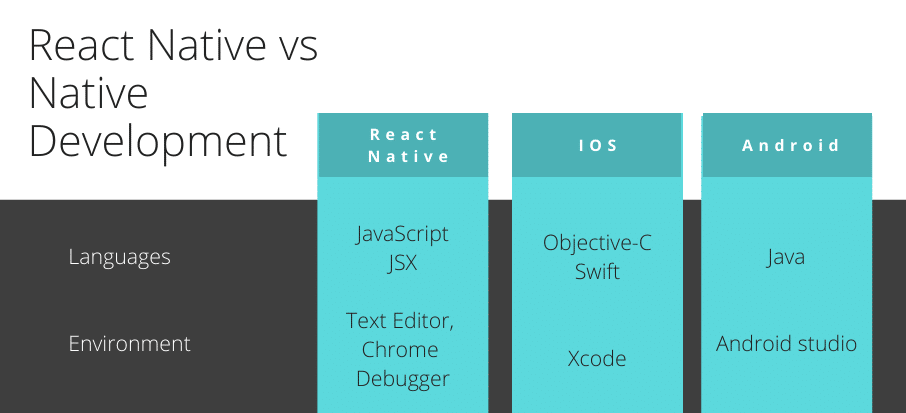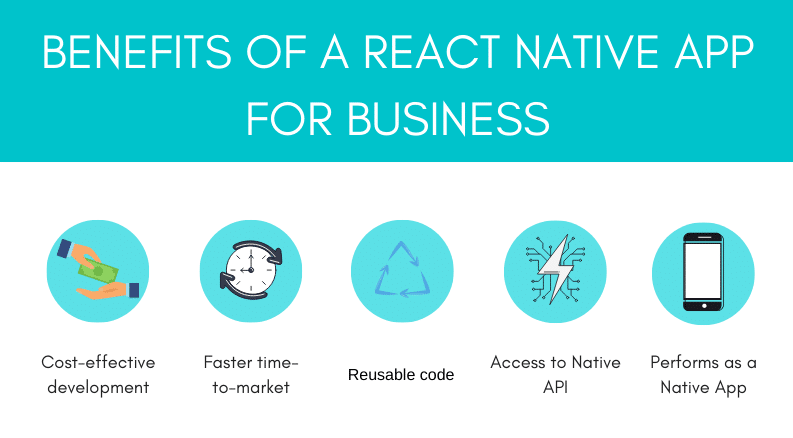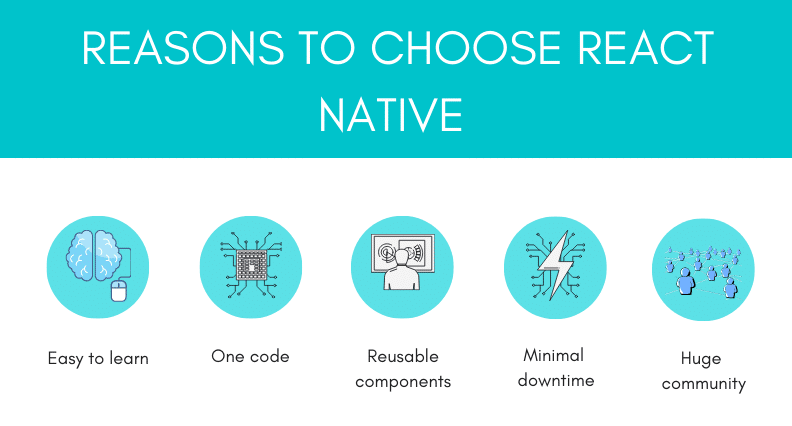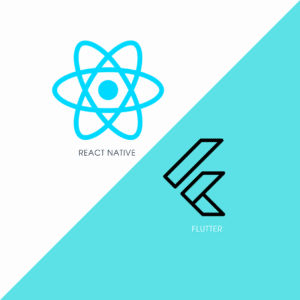React Native Development Services
During the last few years, React Native has been a huge high buzz in the application development world. Not surprisingly – it stirred the whole industry by giving an approach to build mobile apps for both iOS and Android at the same time.
Today, we can see React Native based projects everywhere. Today we can see companies using react native everywhere Uber, Microsoft, Skype, Airbnb, and Facebook, and applies to a whole variety of markets.
However, think ahead before starting the React Native project. What are its top benefits of React Native? What are the differences between cross-development platforms? What your React Native developers should know and which skills have to build an app?
React Native Mobile App Development
React Native is a well-known JavaScript-based mobile app framework that enables you to develop native mobile applications for both iOS and Android. The framework allows you to build an app for different platforms applying the one codebase. It turned out to be one of the best frameworks for mobile app development.
By the way, this year we became one of the best React Native app development companies.
Cross-platform is like an ark of the covenant for software engineers – you can write a code once and apply it on all the platforms. React Native developers can use the tools they’re experienced in, like JavaScript, to build programs they’re unfamiliar with. This is also a huge benefit for clients who decided to develop a new React Native based app; cross-platform solutions allow them to reduce time to market and make the software development cheaper.

App Development With React Native: Client Perspective
React Native is the second most popular choice for mobile app development after Flutter (from our own experience) — especially if you need to build the mobile application fast and don’t have much money to spend on it. And you also need to run it both on Android and IOS. So here are a few biggest advantages of React Native mobile app development for business and this why in 8 cases from 10 we recommend our client to use this cross-platform framework.
Cost-effective solution
Using React Native for your project, you can use the same source code for both iOS and Android applications. It means you spend less time on it and consequently fewer man-hours. So at the end of the day, you have your app development process about 20% less expensive than the Native one.
Faster development
The React Native mobile development process takes 2/3 time of the Native iOS or Android app development duration. And the most important is that you’ll never sacrifice quality or performance because React Native is pretty good on it.
Updating is easy
React Native built-up architecture offers the opportunity to improve and refresh applications fast and smooth.

App Development Using React Native: Developers perspective
It Truly Is Native
React Native isn’t mandatory, nor is any kind of framework/library if you want to develop a mobile application that can be used on multiple platforms. You can point WebView (the browser that comes with the app) to the web app from each platform. That might sound fairly straightforward, but trade-offs are involved. The WebView app performance needs a lot of improvement. Visual effects users have come to expect from mobile apps aren’t there. It is also troublesome to handle complex gestures. There are a lot of other issues, but for the most part, the WebView app will not offer a quality user experience in comparison to the native app. Conversely, React Native gives you everything you need in one platform, including the native code. You’ll be able to utilize latent mechanisms that don’t come with WebView (such as notifications and background tasks). Best of all, it is much faster.
It Isn’t Complex
KITRUM has been worked with React Native on a number of different projects, and it keeps getting better. The app is considered to be a framework, more so than a library. You’ll be able to compose a library pack full of your favorites. If you are new to React Native, and efficiency is something you want straight out of the box, you’ll be in good hands. If you are well-versed with React Native and require more intricate development tools, that won’t be a problem.
It Improves Efficiency
React Native allows you to get work done in short development cycles. This will be quite convenient when you are designing new components, and you want to gauge what your approaches will look like. Rapid bundling and hot reloading mean minimal downtime. Recently, we switched to a new Android emulator (from an actual device). Since the emulator and IDE are kept on a single screen, there wasn’t any need to pick my phone up repeatedly. Things got done very quickly.
Styling
React Native’s style system functions a lot like CSS (but not exactly). Experienced developers may find themselves disappointed if they are used to leveraging CSS features. A lot of properties will not be supported. There is also limited inheritance and a lack of the cascade. You may have difficulty putting together complex shapes. There are flaws with React Native’s style system, but that doesn’t mean it isn’t efficient. On the contrary, it is very simple to use and gives web developers an entry point that is very low. You’ll be able to fit styles and UI on one page if your components are small. By default, all elements are flex. Be sure to check out the extended stylesheet – a library selection full of great styles.
Expo
React Native’s community is quite big. There is no shortage of libraries to pick from. Sadly, not all of them get the attention they deserve from maintainers or creators. As such, things may get wobbly if you were to upgrade to the latest version of React Native. That is where Expo comes to the rescue. This React Native toolbox can help optimize reliability and speed. It consists of various helpful APIs and comes with a number of impressive build facilities. You’ll be able to store and build artifacts inside the cloud. You’ll also have the ability to update your application automatically. It will run behind the scenes if you installed it by way of Google Play or the App Store.
Sadly, it does not offer some important APIs. As such, ensure that Expo comes with the tools you need well before you commit to it. Find out what it doesn’t have, and if there are any plans to incorporate the tools you’re looking for. For instance, background tasks aren’t yet supported. They happen to be crucial for a lot of people, so hopefully, Expo adds this feature down the road. Doing so will give React Native the stability it needs.
Development Tests
The development methodology we use is test-driven. We write out tests well before limitations of any sort are made. This isn’t very easy to do with new projects, though. Unfortunately, you cannot mount components with React Native. Its shallow testing will not give you the pathway you may be looking for. Snapshot testing seems to be the only way to test out React Native’s components. Unfortunately, snapshot tests don’t allow you to test out an application; they are quite fragile and provide little value. In short, this aspect needs a lot of improvement.
Other Things to Keep in Mind
React Native does not support shorthand, text style, view style, image style, and other properties. Popular ones are what you should be using for your project. As an example, rather than margin, use specific types (such as margin-right/left/top/bottom).
React Native does not have any DOM elements. Rather, native elements are what you’ll be working with. React Native does not support property percentage values. When giving out percentage values, the framework may ignore it altogether. Worse, the application may crash.
By default, flex is supported by React Native. It is worth learning so you can use it at your discretion. It can simplify the work that you do at times.

Why KITRUM is the perfect React Native outsourcing partner?
Here at KITRUM we have more than 80 React Native Developers in-house who can help you to turn your idea into reality. For more than 5 years we’ve been building complex React Native apps for Healthcare, Fintech, Media and E-commerce companies. Check our recent projects:

“KITRUM did a great job in terms of quality and keeping deadlines. With their React Native developers, we were able to build a perfect product in a pretty tight timeframe.
— Alex Loscos













